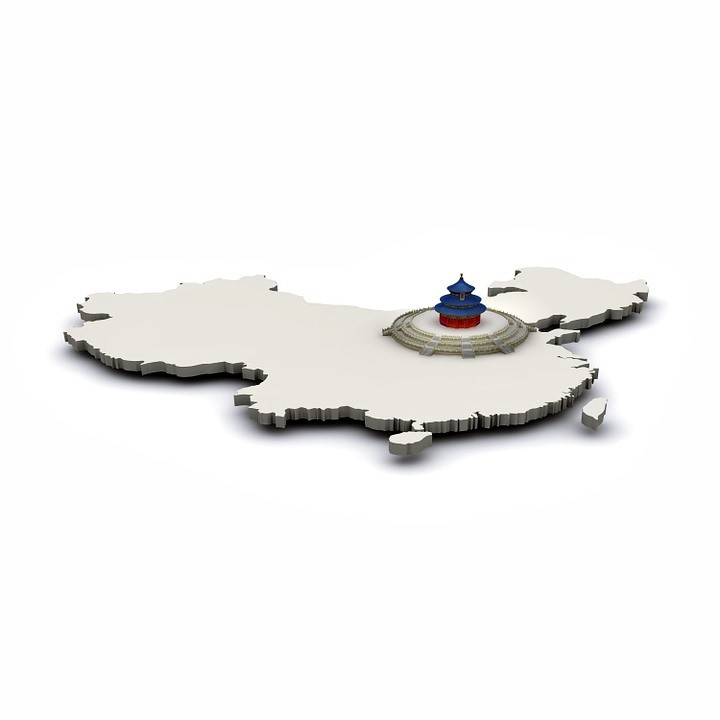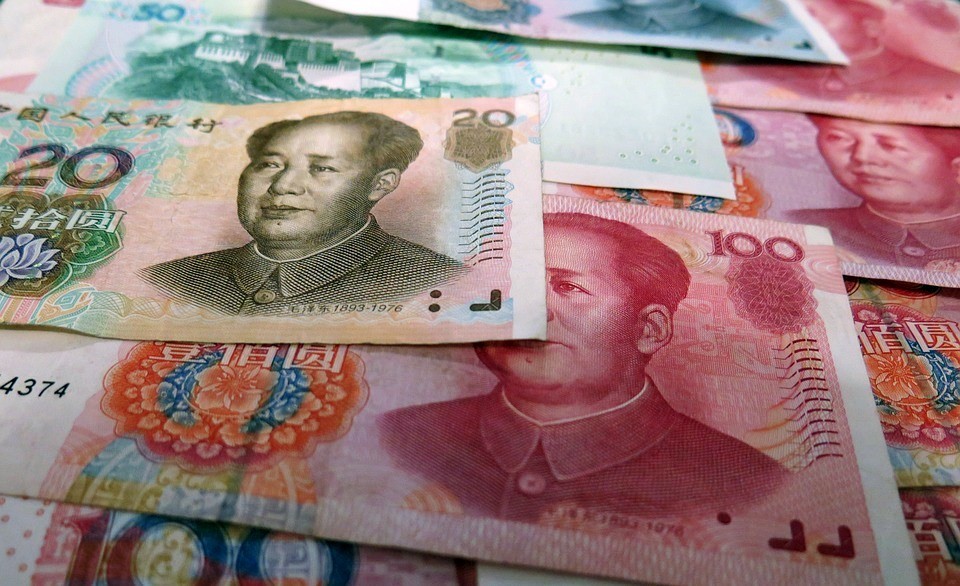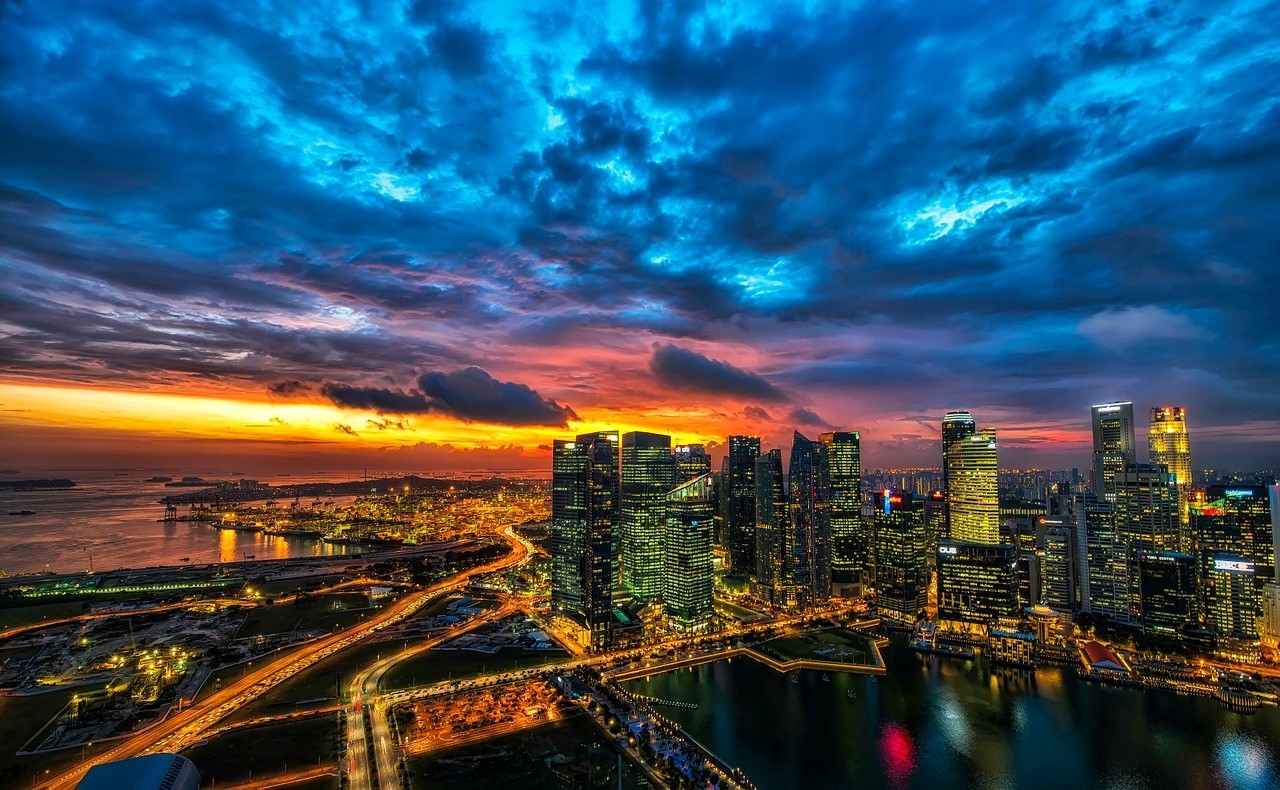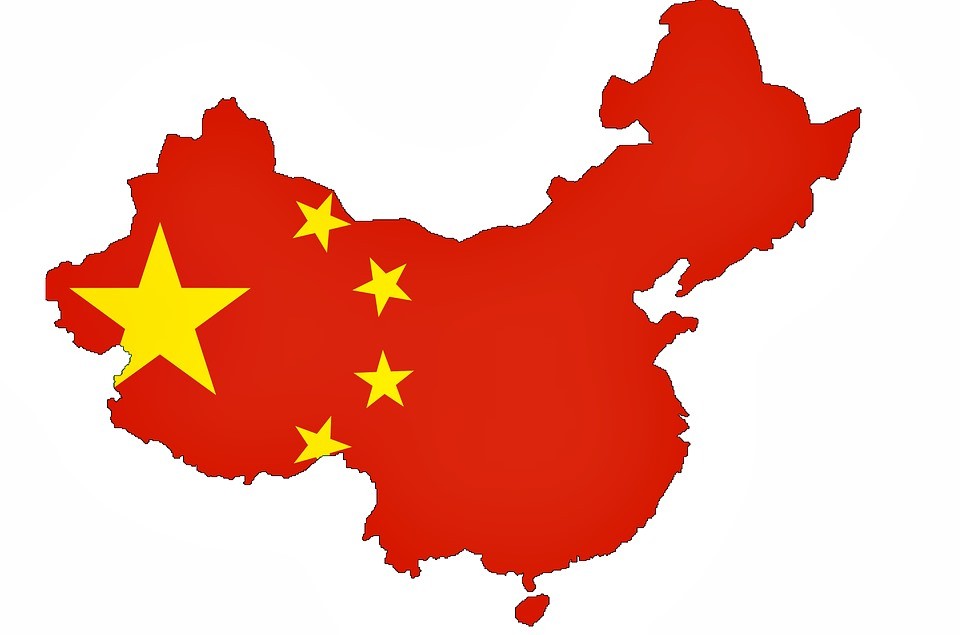Social Media
Top 10 Social Media Sites for 2012

It sees a week does not go by without hearing news of another rising-star social media start-up that quickly garners millions of new users. Consider Instagram , the photo-sharing program with its own social site. It launched in 2010 and Facebook bought it last week for a reported $ 1 billion. Or Pinterest , which also launched two years ago and was deemed the fastest growing social site ever to break through the 10 million unique visitor mark (which happened earlier this year).
With so many sites already out there, it can be confusing as to what are the best ones to use for personal or business purposes. As well, it's debatable who's on the top of the most popular list, depending on what ranking source you use.
For our list of the most popular sites, we've referred to statistics from Experian's Hitwise, which measures market share on the Internet by sourcing data directly from ISP networks, Alexa, a web metrics sites, and statistics collected by Google ad planner.
Top 5
1. Facebook is still the undisputed king of social media sites. Founded in 2004 by Mark Zuckerberg and some friends of his, it has more than 950 million users, making it the most widely used social media site. The ability to fully customize an account, add photos and videos, tag friends, send messages, and form custom groups accounts for the popularity of the site. Facebook combines the functions of all other social media sites and streamlines them for easy access and use.
It also has been extremely popular for branding and outreach, although its new Timeline feature may limit certain marketing efforts. The site can also be used on mobile devices, making social connectivity faster and more convenient, although some complains its mobile app is limited.
2. YouTube is primarily focused on video sharing, and anyone with an account (a Google account for that matter), can upload and view videos posted almost anywhere in the world (some countries like China and Turkey have banned the service). Founded in 2005 by three former PayPal employees, Google bought it for $ 1.65 billion in 2006.
YouTube is free to use, and in addition to posting videos on the site, they can also be embedded on individual Web sites. Anything from TV shows, commercials, movie trailers and product reviews to comedy skits and how-to videos can be found on YouTube. However, unless verified as a user with a good track record, videos are limited to 15 minutes in length.
More than 800 million unique users access the site each month.
3. Twitter, unlike the previous two, focuses on microblogging , with users limited to posting messages with a maximum character count of 140.
Jack Dorsey founded the extremely popular site in 2006. As of today, Twitter has more than 170 million users, with tweets averaging more than 300 million everyday. One feature of Twitter is that it enables users to follow other users. Here, many celebrities and athletes have used Twitter to reach out to their fans.
Businesses and brands utilize Twitter in many ways: as a public relations channel, sending out Tweets on press releases, offers and other announcements; To communicate regularly with customers and conduct surveys; As well as a customer support channel.
4. Yahoo! Answers is surprisingly No. 4 on this list, but with 130 million registered users, and offering a niche that focuses primarily on asking questions and giving answers on specific subjects, it fills an empty rung on the social media ladder.
There are basic profile pages, where you can list your interests as well as your Yahoo Answer contacts and friends. Users can choose whether to be updated on questions or answers posted. Points and levels show how involved a user is in asking or answering questions, with more points gained for the latter.
One drawback to this site is the fact that the answers to queries are not filtered and monitored; Hence the quality can be sketchy.
5. LinkedIn at 96 million unique users per month makes it No. 5 on the list. Primarily used for professional networking, users connect with others based on certain level of relationship. Reid Hoffman and founders of PayPal launched the site in May 2003.
Job, personal and business opportunities can be found through direct connections, and second- and third-degree connections, which are those connected to your contacts. Individuals and businesses can set up profiles, and users can join groups, which are usually related to a profession and are used for discussions about career or business related issues, as well as for employment purposes.
The rest of the best
6. Tumblr is sort of a combination of Twitter and Pinterest in that it is image based, but with text also part of the equation. It's simple to use, and those with a Spotify account can now share music. The site has more than 45 million unique visitors per month.
7 Pinterest is the newbie on the block that has generated a storm of interest, quickly surpassing older and newer social media sites. It focuses on sharing photos between users and its layout is similar to a Pinboard , where users can re-post (or re-pin) images from other users, and like images as well. Images can be posted in categorized collections, such as Architecture, Favorite Places and Sports, and link to the original source.
Founded in 2010 by Ben Silbermann, the vast majority of users are women. Users are "invited" to join, or one can petition to join, but the invite may or may not come. Time magazine listed it as one of the 50 best Web sites of 2011.
As of April 12, the site has 31 million unique users per month. Businesses and brands that are utilizing Pinterest range from Sony Music and Whole Foods to the Wall Street Journal, posting charts, celebrity photos, fashion shots and more.
8 . MySpace was initially at the top of the food chain (from 2003-2008), but its declination in popularity was due to stiff competition and the complicated layout of the site.
It's popular with musicians and it has reorganized its layout a bit in the past several years.
9. Google+ started out like Pinterest as an invite-only social networking site, but due to demand in September 2011 it opened to everyone over age 18. In January of this year, those young as 13 in the US and a couple of other countries Could register for the site.
While it's been difficult to track the number of users, Hitwise ranks Google+ with.53% web traffic market share, and it's been reported that by the end of this year, it will have more than 400 million registered users.
The social media site uses Circles to organize people into groups such as family, friends, business or whatever circle you want to create. Images, text, video and the like can be posted, and you can link your Blogger (another Google product) profile to it, or vice versa.
10. An American programmer who wanted to stay in touch with his friends and keep them updated on what he was up to started LiveJournal in 1999. The company moved to Russia in 2009, which was bought by the Russian company, SUP Media, in 2007 . It has since grown to about 17 million users who keep online diaries or blogs, with a "friends lists" that shares to its social aspect. It is heavily used for political commentary.
Source by Laura Tate
Social Media
The Phantom Growth of China's Ghost Cities

Bloomberg has a new video series out called "China's Ghost Cities."
The reporter, Adam Johnson, describes how the Chinese government is building massive cities that no one lives in yet. The expectation is that China is going to "grow" into these cities.
A remarkable idea, really. The authoritarian planners in Beijing or where decide it would be good if, say, a million people or more could relocate to a pre-planned area.
Then they build out the infrastructure – or rather the entire metropolis, skyscrapers, stops and all – and wait.
Stop for a moment and ponder how nutty this is. The last time your editor checked, central planning was not a huge success. According to history, bureaucrats wielding directives over long distances tend to allocate resources poorly.
But are ghost cities a recipe for a bust? Some say no. The Bloomberg reporter, for instance, assures us that China's economies are different – that is to say, "it's different this time." (Where have we heard that before …)
It is supposedly OK that these ghost cities, built for millions of refugees, have only tens of thousands of people living in them – because all that deserted square footage will eventually be put to good use.
As a bonus, building ghost cities is great for economic growth.
Via running superhighways out to the middle of nowhere, erecting steel and glass towers in the boondocks, China generates new jobs in construction, civil engineering, city planning and the like. All this construction looks fabulous on paper. The ghostly infrastructure gets counted as productive output, and the super-aggressive GDP target is maintained.
But what is wrong with that picture?
For one, there is the central planning problem. Growth and development are free market forces, with signature marks of trial and error. Successful cities are built from the ground up, not decreed by bureaucrat stamp. So how does the government know where a new metropolis should go, or what its optimal size should be?
Then you have the accounting problems. Should the promise of tomorrow be so read reflected on balance sheets today?
Imagine if a public corporation said, "We are going to grow 20% per year by building idle factories in the middle of nowhere, that no one is going to use for quite some time. will show up. We'll make a profit on them ever. Just do not ask when. "
Such a plan would be brutalized by the market, because public companies are held accountable for profits and return on investment (ROI). (At least most of the time – in bubble times investors will happily suspend their rational faculties.)
The Chinese government, of course, does not have to seek profit in its actions. Or it can measure results in some entirely non-traditional way, via "how many jobs did we create" or "how do the GDP numbers look."
At the end of the day, the "ghost city" mandate is directly channeling John Maynard Keynes, who once suggested digging holes, then filling them up again as a way to put men to work.
China is being more sophisticated. Rather than digging holes, it is putting up buildings. The effect is the same though. "Some day" the empty skyscrapers will have value – if they are not condemned as worn-out structures first – but until then they are just holes.
China bulls are not bothered by the ghost cities for at least three reasons.
First, they have convinced themselves (with more than a bit of faith) that the empty metropoli will one day (sooner rather than later) be full.
Second, they figure China has a lot of money to burn even if the ghost cities do not work out.
And third, as the old saying goes, "a rolling loan growers no loss." As long as the specialized music is playing, the property developers can keep dancing.
The trouble, as always, comes when the music stops. If China turns out to have built, say, 20 years of excess capacity by the time that happens, then hundreds of billions' worth of stagnant projects will have to be written off.
Tougher still is the idea that China's "economic miracle" is actually a heavily leveraged bet on mercantilism … propped up by runaway construction … with the tail end of the boom pushed recklessly from pie-in-the-sky projections for future growth.
That is another favorite tactic of investment manias: Along with the empire of forever skyward growth curves, mortgaging tomorrow (and borrowing against it) for the sake of today.
Even if China can write checks to cover the write-off costs of all those cities, there is a big multiple built in to the global economy right now on the assumption that China growth is the real deal. When it sinks in that much of growth is actually "ghost" or "phantom" growth – in keeping with these empty monuments to now – the collapse of that multiple could hurt.
Social Media
The Chinese Water Lantern Festival

The Chinese have designed and crafted lanterns that can float in water and glide in the air. Though sky lanterns were initially crafted as a device, to send signals, today they are used as decorative articles. Water Lanterns in Chinese festivals have its own importance.
There is an interesting story to the History of Chinese lanterns. It was believed that these lanterns, both the sky lanterns and the Water lanterns used in Chinese festivals were initially created out of necessity rather than artifacts for decorations. The Chinese have a history of inventing several new things and also leading the way in several new technologies. But, initially, the Chinese did not have access to or the knowhow to make a vital building material – Glass. Hence they did not have glass lanterns or glass windows. On the other hand, they had the skill of making paper. The paper industry in china was so advanced that it could produce paper that was very thin, to let light pass through it. They could also add beautiful colors and embellishments to the paper. Thus was born, the world’s first source of portable light – the lantern.
These lanterns were then gradually adapted to float in water and glide in the sky. Such was the skill of the Chinese craftsmen that these lanterns were used for lighting public places, homes and even battlefields. There is a story of a military strategist Zhuge Liang, having used paper lanterns to help the army march by night and attack by the day.
Over time, this battlefield beacon turned into an epitome of hope and wellbeing and festivity. The origin of the Lantern festival can be dated back to the Han Dynasty. During this time, the city is decorated with lanterns that are beautifully crafted in different shapes and sizes and then displayed with wishes or riddles written on them.
Water lanterns in Chinese festivals like the Moon Festival are a major tourist attraction. People from all over the world come to witness this event. On this day children and adults make or buy Water lanterns and write wishes on them. They then set these lanterns afloat in the water under the moonlight and watch them float away.
Water Lanterns in Chinese Festivals alongside other lanterns are used to light up the way to guide the spirit of their ancestors to come and bless them. Even today this tradition is followed, and people decorate their homes and public places to welcome their ancestors.
Health
Keemun Black Tea From China – Caffeine Content, Health Benefits, And Other Properties

Keemun is a type of Chinese black tea, originating in Qimen county of Anhui Province, China. This article gives an overview of the caffeine content, health benefits, and other properties of Keemun.
Keemun is primarily produced in Anhui province, but teas in this style have also begun to be produced in nearby Hubei, as well as in Jiangxi, and even in Taiwan. Keemun is usually described as having an earthy aroma, and its overall character is quite different from Indian and Ceylon teas. My personal perspective is that Keemun has a richer, warmer quality, often reminiscent of dried fruit, and in higher grades, a pleasing hint of wood or wood smoke. These teas are rich and full-bodied, and are among my favorite black teas.
Caffeine content:
Although you may be looking for more concrete information, it is hard to generalize about the caffeine content of Keemun. Even though it originates primarily in one region and shares certain aspects of production, Keemun is fairly diverse, coming in different grades. As a general rule though, Keemun is often in the moderate to high end of caffeine content, among teas, which means that it still has considerably less caffeine than a typical cup of coffee. Keemun has historically been used in breakfast blends, where strongly caffeinated teas were desired
Health benefits:
Keemun has actually been the subject of direct scientific study., in association with weight loss in animal studies. There is only a small amount of research referring specifically to this variety of tea, however, so most of what can be said about Keemun must be inferred from general studies about black tea.
Although green tea has a stronger association with supposed “health benefits” in the public consciousness in the United States, this association may be skewed by historical factors. Much of the early research on tea and health was conducted in Japan, where tea is synonymous with green tea. Subsequent research has found substantial evidence that black tea is healthy as well. In the absence of more reserach specifically looking at Keemun, it seems reasonable to conclude that Keemun is likely to have a similar amonut of health benefits to black tea.
Locating high-quality Keemun:
My recommendation, if you want to buy the best Keemun, is to buy exclusively loose-leaf. My experience is that the best Keemun is usually sold by companies that specialize in Chinese tea. Because they store relatively well, Chinese black teas, even those of considerably high quality, tend to be relatively inexpensive, with all but the highest grades (Keemun Hao Ya A and B, and Keemun Mao Feng) costing well under $10 for about 1/4 pound or about 100-125 grams. A few companies, including Rishi Tea, Arbor Teas, and Little Red Cup, sell fair trade certified Keemun, produced in Hubei, Anhui, and Jiangxi provinces, respectively.












